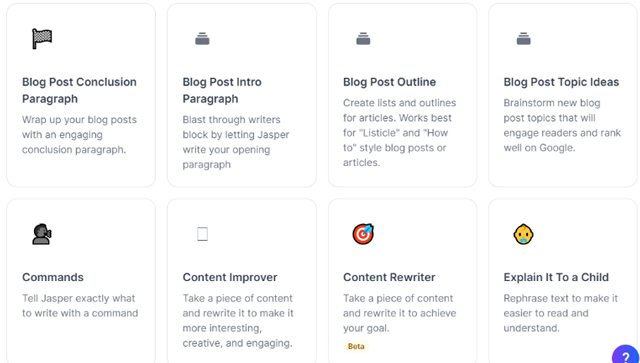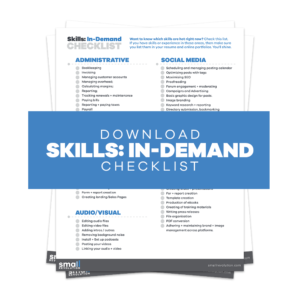Experiencing the icy grip of writer’s block is a fear that’s all too real for all the bloggers out there crafting their next great blog post.
You’re on a quest searching high and low for that eureka moment of inspiration, that spark that sets your content ablaze with innovation.
But that creative well can run dry quickly, leaving you adrift in a sea of frustration.
Your ideas, once a river, now a trickle. The pressure mounts as the cursor blinks impatiently on the blank screen—every writer’s sworn nemesis.
However, this needn’t be your experience in an evolving digital landscape where ChatGPT exists.
It’s no ordinary tool. This AI-powered dynamo is ready to pump up your blog with a steady flow of fresh, unique ideas making it a pillar in your creative process. In the following sections, we will explore:
- How ChatGPT works
- The benefits of using it for idea generation and effective writing
- Best practices when using ChatGPT for blog promotion
- Comparison between ChatGPT and other similar tools
How ChatGPT Works
ChatGPT is a natural language processing (NLP) tool that uses artificial intelligence to suggest ideas for blog articles.
It’s been trained on a large dataset of text from various sources, including news articles, engaging blogs, gripping stories, and more.
This means it understands context down to a T and can generate ideas that are bang on the money, based on what you tell it.
If you’re ready to give it a spin, begin with a prompt, say, your blog topic and a few related keywords you’re thinking of including.
Let’s say your blog topic is “Tips for Sustainable Living” and your related keywords are “recycling”, “green energy”, and “minimalism”. You might start with a prompt like this:
“Discuss the importance of sustainable living and include the following keywords: recycling, green energy, and minimalism.”
Now here comes the fun part. You can fine-tune the process.
Add more details like your target audience, and the kind of tone you want to set—maybe casual and humorous or formal and informative?
Additionally, mention the format you’re using: a how-to guide, a listicle, or an in-depth review.
Once you’ve fed all this information, ChatGPT swings into action and serves you a platter of fresh and relevant ideas to pick from.
The Perks of Partnering With ChatGPT
ChatGPT is turning the brainstorming game on its head, making it a must-have tool for every blogger wanting to improve their freelance writing career.
One of its major perks is that it’s a massive time saver. With just one click, bloggers can whip up a whirlwind of unique ideas for their articles.
This frees up their time to focus on crafting their masterpiece or ticking off other tasks on their to-do list.
But there’s more to this AI wizardry. Unlike our own brains, which might be boxed in by personal biases or experiences, ChatGPT pulls ideas from an enormous data universe.
Because of this, you receive unexpected and innovative concepts that you might never have dreamt up on your own.
But the cherry on top is how ChatGPT can amp up your content and give your SEO a nice little boost.
Provided with a list of popular keywords, it can sprinkle them within paragraphs once prompted, making your blog climb up the search engine ladder.
Maximize Your Impact With ChatGPT: A Guide to Best Practices
As with any writing tool, you’ve got to wield ChatGPT with a bit of strategy to make the most of its capabilities.
Let’s dive into some tricks to turn you into a ChatGPT whizz:
Set Clear Objectives
Just about to kick off a session with ChatGPT? First, get clear on what you’re aiming for. Is it a how-to-guide, a thought-provoking op-ed, or maybe a catchy listicle?
By having your goals in your back pocket, you’re all set to start ChatGPT towards drumming up ideas that perfectly match your content game plan.
Use Keywords
You’ll want to toss in some keywords that give a taste of what you’re after. The more precise you are, the more accurately ChatGPT can conjure up razor-sharp ideas for your blog.
Let’s say you’re planning a blog post about vegan dessert recipes. You can prompt ChatGPT to include keywords like; “vegan,” “dessert,” “recipes,” “easy to make,” or “healthy.”
This way, ChatGPT knows exactly what you’re aiming for and can help you brainstorm around vegan dessert recipes that are easy to make and healthy.
Refine Your Search
ChatGPT generates ideas based on your initial prompt. But, don’t just stop there. Think of this as a creative dance where you can fine-tune results by throwing in extra questions or dishing out more context.
For instance, say you’ve given ChatGPT the prompt “vegan dessert recipes”. It suggests “10 Easy Vegan Dessert Recipes for Summer”. If you want to get more specific, you could follow up with “What about gluten-free options?” or “What about no-bake recipes?”
Combine Ideas
Imagine you run a lifestyle blog, and you’re planning your content for the coming month. You decide to tap into ChatGPT for some inspiration. With a few prompts about your topics of interest—say, sustainable living and budget-friendly home decor—ChatGPT whirs into action.
Within moments, you have a handful of suggestions: “Eco-Friendly DIY Decor Ideas,” “Sustainable Living on a Budget,” and “Transforming Your Home with Recycled Materials.” Each of these ideas is interesting on its own, but none quite hit the mark.
Then, the light bulb moment strikes. You decide to blend elements from the three ideas. The result? A new, exciting blog post idea—”DIY Home Decor on a Budget: Crafting with Recycled Materials for a More Sustainable Home.”
The AI provides you with multiple suggestions, and you have the freedom to combine, modify, and sprinkle your unique touch to create content that perfectly suits your blog.
Edit the Output
While ChatGPT can generate many great ideas, it’s important to review and edit them before adding them to your content calendar.
You may need to adjust the tone, format, or length to fit your brand style or target audience.
Let’s say you’re running a travel blog focusing on luxurious, high-end destinations. Your target audience is affluent travelers looking for unique, off-the-beaten-path experiences.
Having turned to ChatGPT for content inspiration, it churns out a list of ideas, one of which is “Budget-friendly Getaways in Europe.”
While this is a great idea, it doesn’t align with the luxe tone of your blog or your target audience.
So you take the foundation of this idea and tweak it to fit your brand. After a bit of editing, your new content idea becomes “Luxurious Hidden Gems: Exploring Europe’s Lesser-known High-End Destinations.”
ChatGPT is just a starting point. You can customize and refine responses to ensure alignment with your specific brand style and audience needs.
Avoid Over-Reliance
Diversity in content strategy is like a vibrant mosaic, with each tile representing a different aspect of your brand perspective.
Too much of the same, and the picture lacks depth. It’s flat. But when you incorporate a variety of tones, themes, formats, and perspectives, the picture comes to life. It’s vibrant, engaging, and uniquely yours.
ChatGPT, with its robust idea-generating abilities, can provide a plethora of those mosaic tiles.
But it’s your judgment and creativity that decide where each piece fits best. It’s you who shapes the final picture.
By handpicking and fine-tuning the AI’s suggestions, you add your personal touch and make your creative writing truly stand out.
Comparing ChatGPT to Other Content Creation Tools
There are numerous writing tools that can assist with idea generation aside from ChatGPT.
ChatSonic , powered by the sophisticated CPT-4, is a step ahead of the free version of ChatGPT when it comes to understanding context and subtleties, thanks to its advanced natural language processing and algorithms.
This platform doesn’t just generate text, it also advises on sentence structure, choice of words, and tone, enabling you to craft top-notch content. It has a variety of templates to enrich your online writing.
This, coupled with its impressive template library, makes it an especially valuable ally for creating social media content, website copy, and e-commerce content.
Along with idea generation, Jasper AI specializes in helping bloggers produce unique content that scores high for SEO. Users have to key in the keywords they want included similar to when using ChatGPT.
Jasper, unlike ChatGPT, includes templates for different content creation forms from blogs and ads to eCommerce and SEO.

Additionally, you can ask Jasper AI to enhance your prompt while using chat function by clicking on the “Enhance Prompt” button after keying your prompt.
The Co-Writer You Never Knew You Needed
If you ever feel that you’ve hit a creative wall as a blogger, leverage ChatGPT.
It’s a co-writer that breathes life into your brainstorming sessions, generating unique, SEO-optimized topics at the drop of a hat.
We’re not talking about a rocket science interface either. ChatGPT is user-friendly. Both newbie bloggers just getting their feet wet and seasoned pros will find it easy to navigate.
Just stick to the tried and true best practices and sidestep a few common pitfalls to unleash the full power of ChatGPT.
It’s a game changer, an upgrade, and a must-have on your blogging tool belt. Try it and turbo-charge your efficiency.


